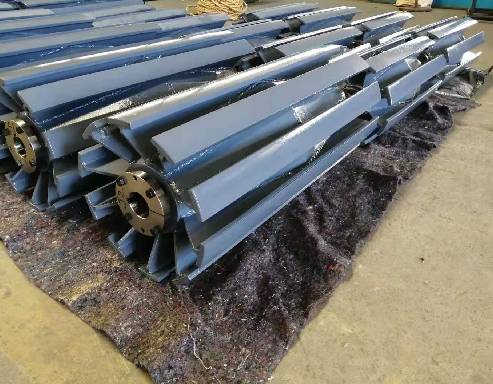 Afrikaans
Afrikaans  Albanian
Albanian  Amharic
Amharic  Arabic
Arabic  Armenian
Armenian  Azerbaijani
Azerbaijani  Basque
Basque  Belarusian
Belarusian  Bengali
Bengali  Bosnian
Bosnian  Bulgarian
Bulgarian  Catalan
Catalan  Cebuano
Cebuano  Corsican
Corsican  Croatian
Croatian  Czech
Czech  Danish
Danish  Dutch
Dutch  English
English  Esperanto
Esperanto  Estonian
Estonian  Finnish
Finnish  French
French  Frisian
Frisian  Galician
Galician  Georgian
Georgian  German
German  Greek
Greek  Gujarati
Gujarati  Haitian Creole
Haitian Creole  hausa
hausa  hawaiian
hawaiian  Hebrew
Hebrew  Hindi
Hindi  Miao
Miao  Hungarian
Hungarian  Icelandic
Icelandic  igbo
igbo  Indonesian
Indonesian  irish
irish  Italian
Italian  Japanese
Japanese  Javanese
Javanese  Kannada
Kannada  kazakh
kazakh  Khmer
Khmer  Rwandese
Rwandese  Korean
Korean  Kurdish
Kurdish  Kyrgyz
Kyrgyz  Lao
Lao  Latin
Latin  Latvian
Latvian  Lithuanian
Lithuanian  Luxembourgish
Luxembourgish  Macedonian
Macedonian  Malgashi
Malgashi  Malay
Malay  Malayalam
Malayalam  Maltese
Maltese  Maori
Maori  Marathi
Marathi  Mongolian
Mongolian  Myanmar
Myanmar  Nepali
Nepali  Norwegian
Norwegian  Norwegian
Norwegian  Occitan
Occitan  Pashto
Pashto  Persian
Persian  Polish
Polish  Portuguese
Portuguese  Punjabi
Punjabi  Romanian
Romanian  Russian
Russian  Samoan
Samoan  Scottish Gaelic
Scottish Gaelic  Serbian
Serbian  Sesotho
Sesotho  Shona
Shona  Sindhi
Sindhi  Sinhala
Sinhala  Slovak
Slovak  Slovenian
Slovenian  Somali
Somali  Spanish
Spanish  Sundanese
Sundanese  Swahili
Swahili  Swedish
Swedish  Tagalog
Tagalog  Tajik
Tajik  Tamil
Tamil  Tatar
Tatar  Telugu
Telugu  Thai
Thai  Turkish
Turkish  Turkmen
Turkmen  Ukrainian
Ukrainian  Urdu
Urdu  Uighur
Uighur  Uzbek
Uzbek  Vietnamese
Vietnamese  Welsh
Welsh  Bantu
Bantu  Yiddish
Yiddish  Yoruba
Yoruba  Zulu
Zulu herringbone wing pulley
The Herringbone Wing Pulley An Ingenious Design for Enhanced Efficiency
The herringbone wing pulley is a brilliant innovation in the field of mechanical engineering, particularly in the design of conveyor systems. Its unique shape and configuration are inspired by the herringbone pattern, a design that is not only aesthetically appealing but also highly functional. This article will explore the mechanics of the herringbone wing pulley, its applications, and the advantages it brings to various industrial settings.
Understanding the Design
The herringbone wing pulley is characterized by its V-shaped grooves that are arranged in a zigzag pattern, resembling the backbone of a herring fish. This design serves multiple purposes. First, it improves the grip on the conveyor belt, reducing slippage and ensuring a seamless movement of materials. The wing-shaped extensions on either side of the pulley play a crucial role in aligning the belt, allowing for stable and consistent operation.
Additionally, the herringbone pattern helps distribute the load evenly across the surface of the pulley. This even distribution minimizes wear and tear, extending the lifespan of both the pulley and the conveyor belt. As a result, maintenance costs are significantly reduced, making it a cost-effective solution for industries that rely on conveyor systems for material handling.
Applications in Industry
Herringbone wing pulleys are commonly found in various industries, including mining, agriculture, and manufacturing. In the mining sector, they are used in conveyor systems that transport bulk materials such as coal, ore, and gravel. The improved grip and reduced slippage offered by the herringbone design ensure that materials are moved efficiently, even in challenging environments where dust and debris can cause issues.
herringbone wing pulley

In agriculture, these pulleys are utilized in grain handling equipment. The efficiency of the herringbone wing pulley helps in transporting grains from one location to another with minimal loss and damage. The same principle applies in manufacturing, where the movement of goods and materials is critical to maintaining production flow.
Advantages of Herringbone Wing Pulleys
One of the primary advantages of the herringbone wing pulley is its ability to enhance efficiency. The design minimizes the chances of belt slippage, leading to smoother and faster operations. In addition, the reduced wear and tear on both the pulley and the belt mean lower maintenance requirements and prolonged service life.
Another significant benefit is the versatility of the herringbone wing pulley. They can be adapted to various sizes and configurations, making them suitable for different types of conveyor systems. Whether in a large industrial plant or a small agricultural setup, these pulleys can be tailored to meet specific needs.
Moreover, the herringbone wing pulley promotes energy efficiency. By reducing friction and preventing slippage, less energy is wasted during the operation of the conveyor system. This not only helps lower operational costs but also aligns with sustainable practices by reducing the carbon footprint associated with material handling.
Conclusion
In conclusion, the herringbone wing pulley is an extraordinary advancement in conveyor technology. Its ingenious design not only improves performance but also extends the life of critical components in various industrial applications. As industries continue to seek ways to enhance efficiency and reduce costs, innovations like the herringbone wing pulley will undoubtedly play a crucial role in shaping the future of material handling.
-
Revolutionizing Conveyor Reliability with Advanced Rubber Lagging PulleysNewsJul.22,2025
-
Powering Precision and Durability with Expert Manufacturers of Conveyor ComponentsNewsJul.22,2025
-
Optimizing Conveyor Systems with Advanced Conveyor AccessoriesNewsJul.22,2025
-
Maximize Conveyor Efficiency with Quality Conveyor Idler PulleysNewsJul.22,2025
-
Future-Proof Your Conveyor System with High-Performance Polyurethane RollerNewsJul.22,2025
-
Driving Efficiency Forward with Quality Idlers and RollersNewsJul.22,2025





























